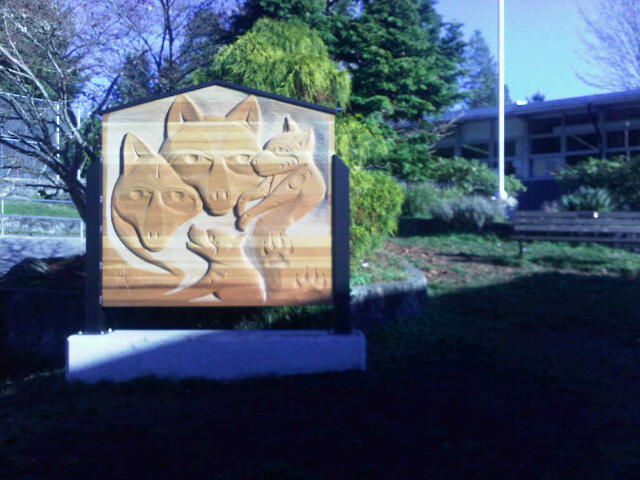A Shared History, Present and Future
An Aboriginal Blessing Ceremony at West Bay Elementary
The library smelled of salmon and berries. Student volunteers moved through the crowd of guests seated at the linen draped tables serving coffee and tea, refilling water glasses. All of us were adorned with beaded necklaces strung with carved canoe paddle pendants engraved with a wolf and our school’s name, West Bay.
The library smelled of salmon and berries. Student volunteers moved through the crowd of guests seated at the linen draped tables serving coffee and tea, refilling water glasses. All of us were adorned with beaded necklaces strung with carved canoe paddle pendants engraved with a wolf and our school’s name, West Bay.
Upstairs in our gym, which smelled of cedar boughs, classes of students readied themselves for something foreign to them: a Blessing Ceremony. One class sat along the benches, preparing to sing with the Squamish Nation’s Eagle Song Dancers. A large group of grade fours wiggled in their spots on the floor, excited for their part in the ceremony – the wolf dance. They wore red bandanas to distinguish them from others. Members of the Nation were speaking with another group of students, wrapping some in blankets, explaining to others about the quarters, which they would offer to witnesses during the ceremony. These students had volunteered to participate, which meant volunteering for the unknown, the unfamiliar.

We currently have no Aboriginal students in our school of 400, a school which stands on Squamish Nation lands. Yet here we are, breaking bread with the Nation’s Elders and preparing to honour the work of Xwalacktun, who spent time in the past year carving a wolf family into planks of cedar, framed in the shape of a house. A family protected by shelter and one another – a symbol for our school community.
When the Elders were led into the gym to the Eagle Song group’s drumming and song, I felt an odd sense of the past and present merging. The echoes of the drums and the deep chanting from the drummers called to something in me. I looked across the gym at the carver and recognized him as the man who had visited my class when I was in grade 7 and taught us how to draw. I still have the orca and eagle and I still remember the powerful sense of accomplishment and artistry I felt when I had put pastel to paper and created something beautiful under his instruction. And now, here he was, having created something beautiful for my students and our community. In doing this he and his people are part of our community in a visible and significant way. The magnitude of this harmony hit me just before my turn to speak as a witness.
I took my place at the front of the gym and told the crowd about how Xwalacktun taught me to draw, over 20 years ago. I told them how that experience is part of who I am. I got choked up and had to stop speaking. So I turned to him and the others, raised my hands in thanks and whispered, “O Siem.”
What I didn’t say then, due to the wave of emotion that silenced me, I will say now.
When Xwalacktun spoke, he spoke of the carving as a shared piece of artwork. His use of the word shared echoed the words of Laura Tait who just last year taught me that our history in BC (and Canada) is a shared history. And now, with this wolf family of cedar to greet us every morning, I feel a powerful sense of our shared future as well.
